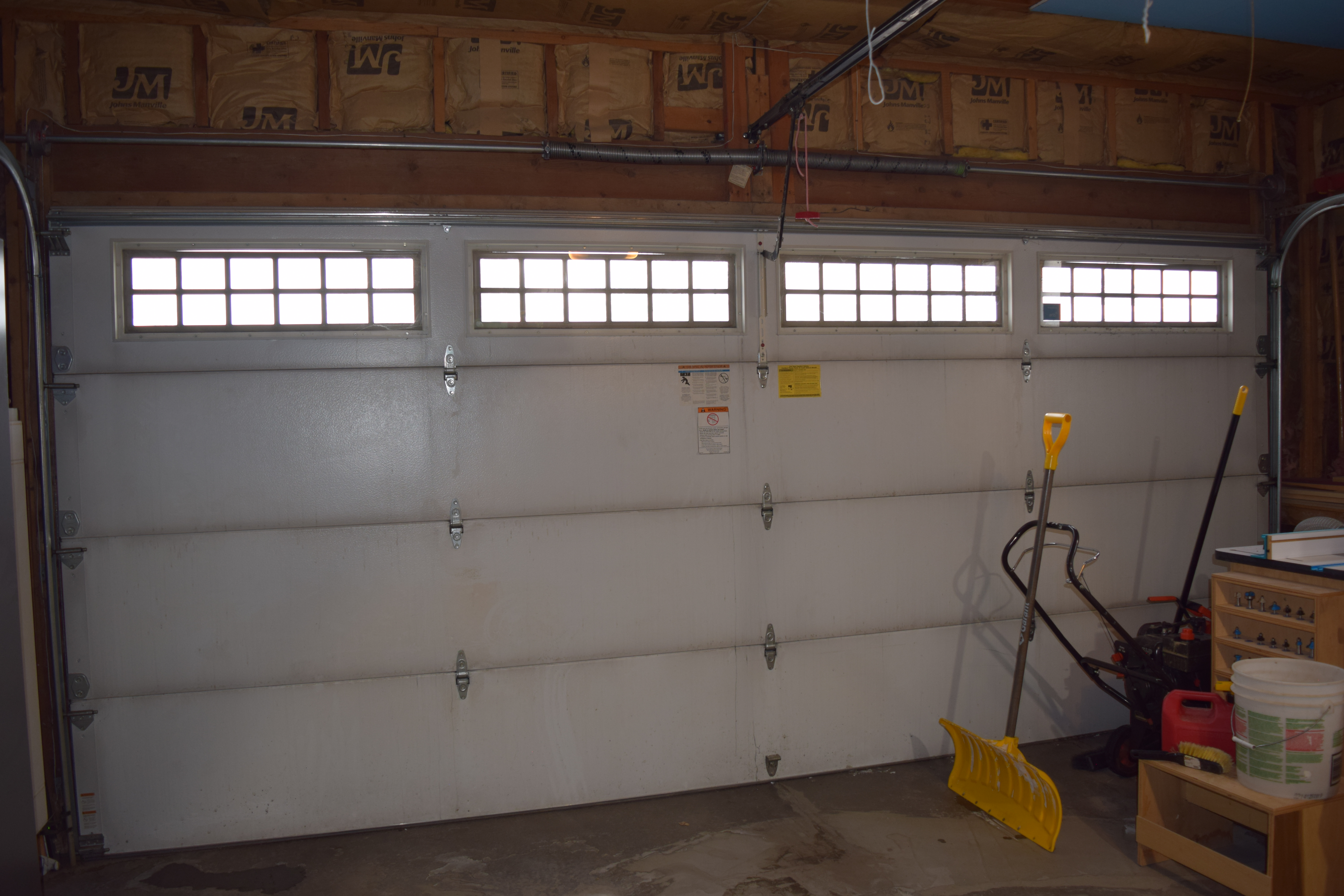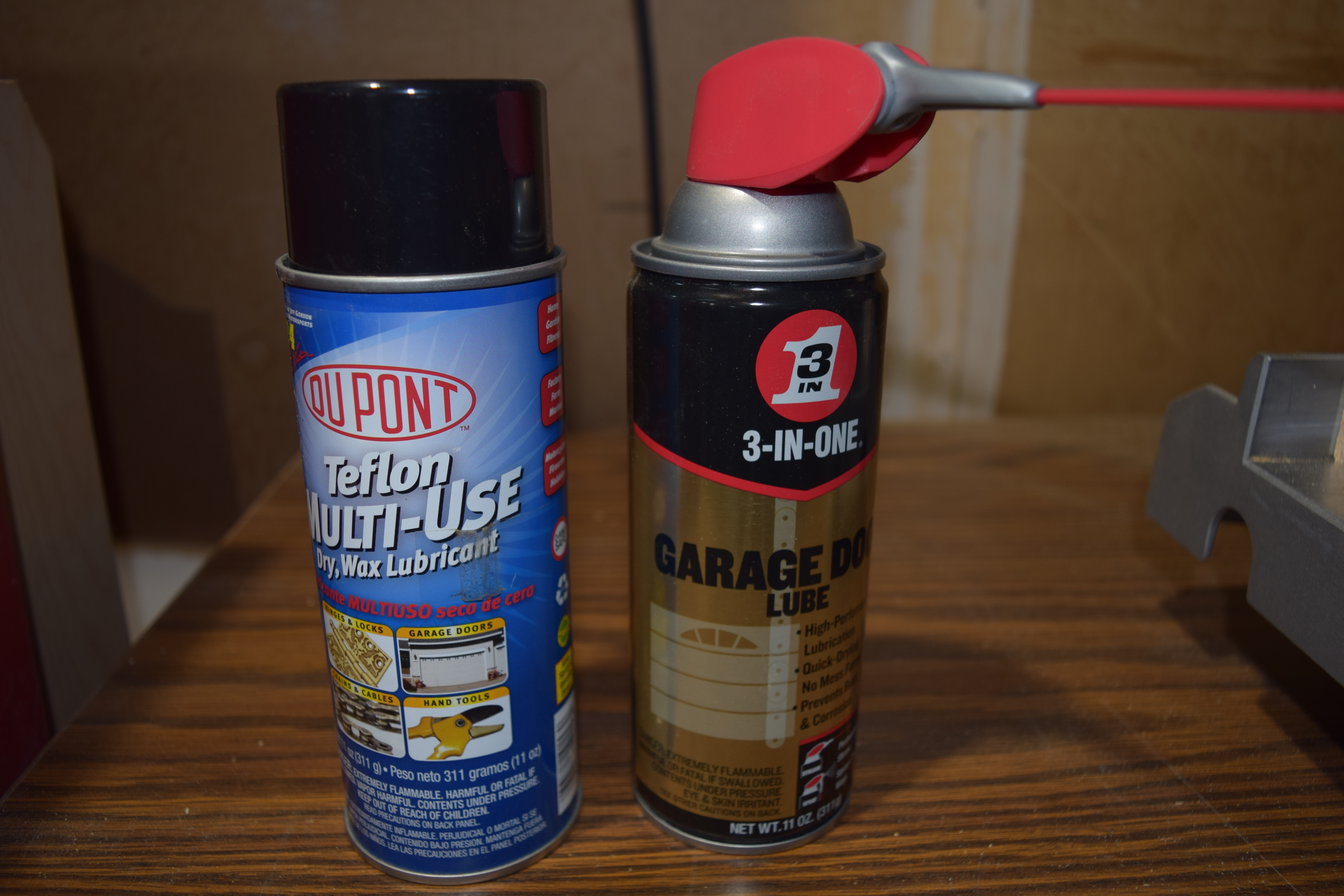Most of our homes have an overhead garage door. Yours may be one large door or one or two smaller doors. Regardless of size, or type of material, the maintenance is the same.
Attached to most of the doors is an automatic opener to open and close the doors with a press of a button. The maintenance of the opener will be discussed in the last section of this article.
Regular maintenance of the door and opener will extend the life and avoid costly repairs.
Garage door interior
Lubricate the Rollers and Tighten all Bolts and Nuts
The door(s) may be wood, metal, or composite. Most overhead doors have several horizontal panels, connected by brackets with hinges. The door is usually opened by assistance by high tension torsion springs mounted above the door connected to high-tension lift cables.
Due to the tension in these springs and cables, only an experienced garage door technician should adjust or replace them. The springs can break with age. If one does break, replace both so you have equal tension.
Have the springs been replaced by an experienced door technician?
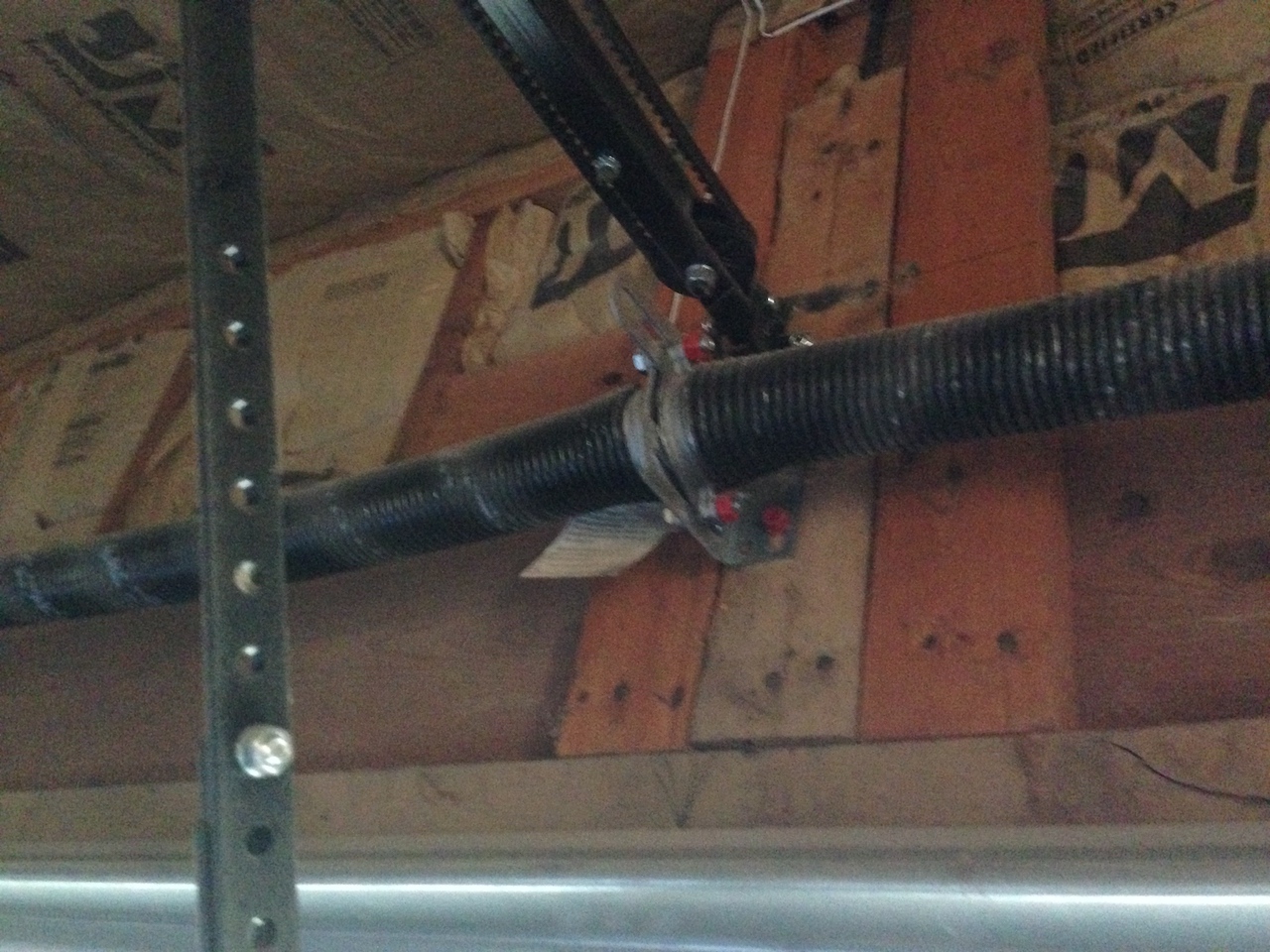
Torsion springs
Other than the springs, there are several annual garage door tune-up maintenance procedures you can do. You should perform monthly safety system checks of the door and opener.
Annually, check and perform the following
- Lubricate the garage door tracks and steel rollers on the sides of the door with spray silicone or Teflon lubricant. Do not use an oil-based product, i.e. WD40, as it will collect dust. Do not lubricate nylon rollers or the door tracks.
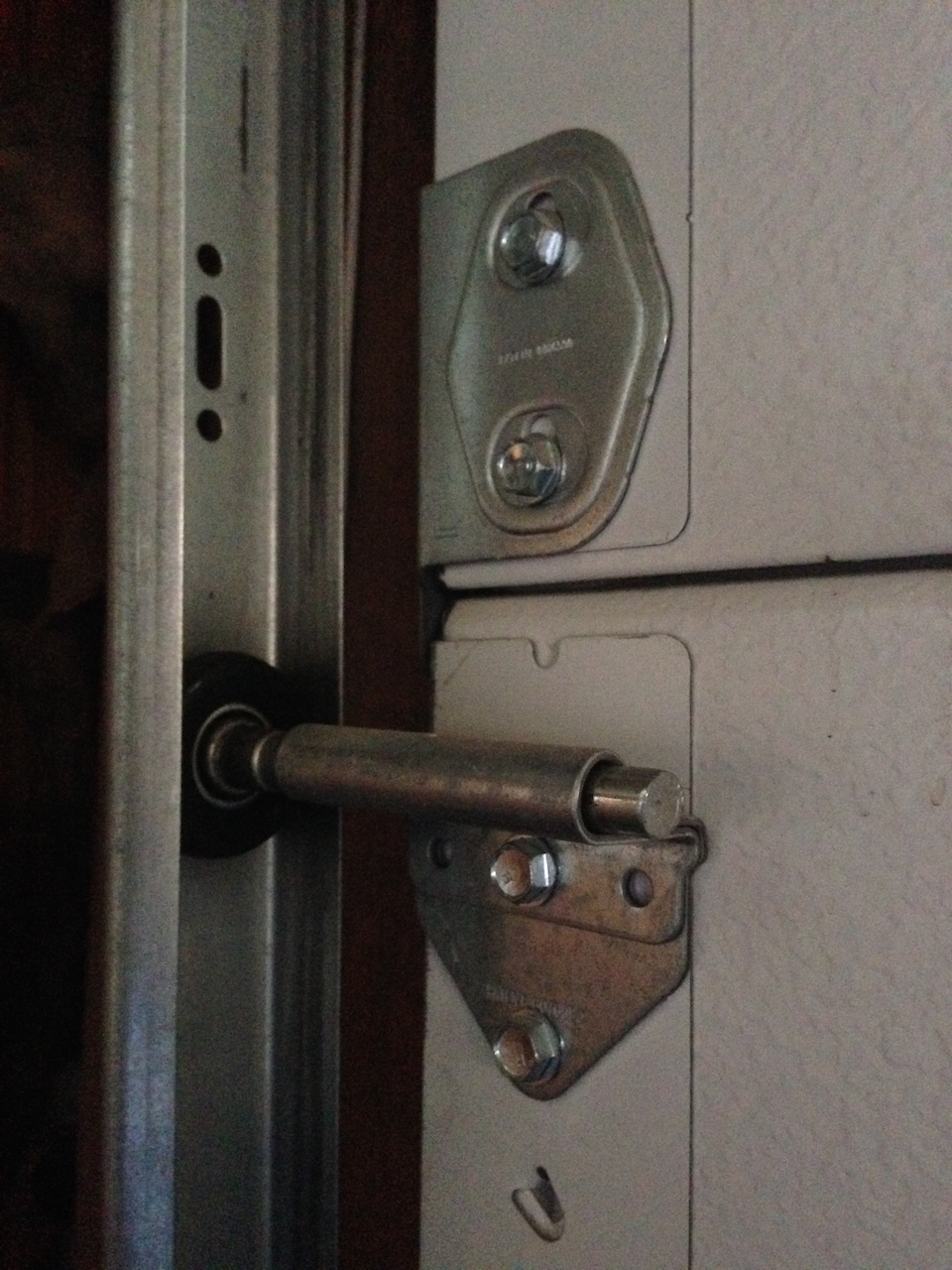
Garage door rollers
- You may also lubricate the frame of the door opening on the house where the garage door contacts the wood with a regular wax candle. This will help the door slide easier against the house while opening and closing.
Door Lubricants
- If any of the garage door rollers appear to be loose, show signs of wear, or damage, replacement rollers are available at most hardware and home improvement centers. Mid-sections are easily replaceable. The bottom rollers are under tension and caution must be used if you replace these. It may be wise to hire trained garage door maintenance services to replace these rollers.
- Loose bolts - tighten all the nuts and bolts using a socket, open-end, or box end wrench. This includes those on the door, hinges, roller bracket, and those that secure the door roller tracks to the wall.
- Release the emergency cord to check the door balance that it moves easily up and down. When the spring tension is properly adjusted, you should be able to move the door easily up and down with one hand. If the spring tension needs adjusting, contact a qualified door technician or garage door professional.
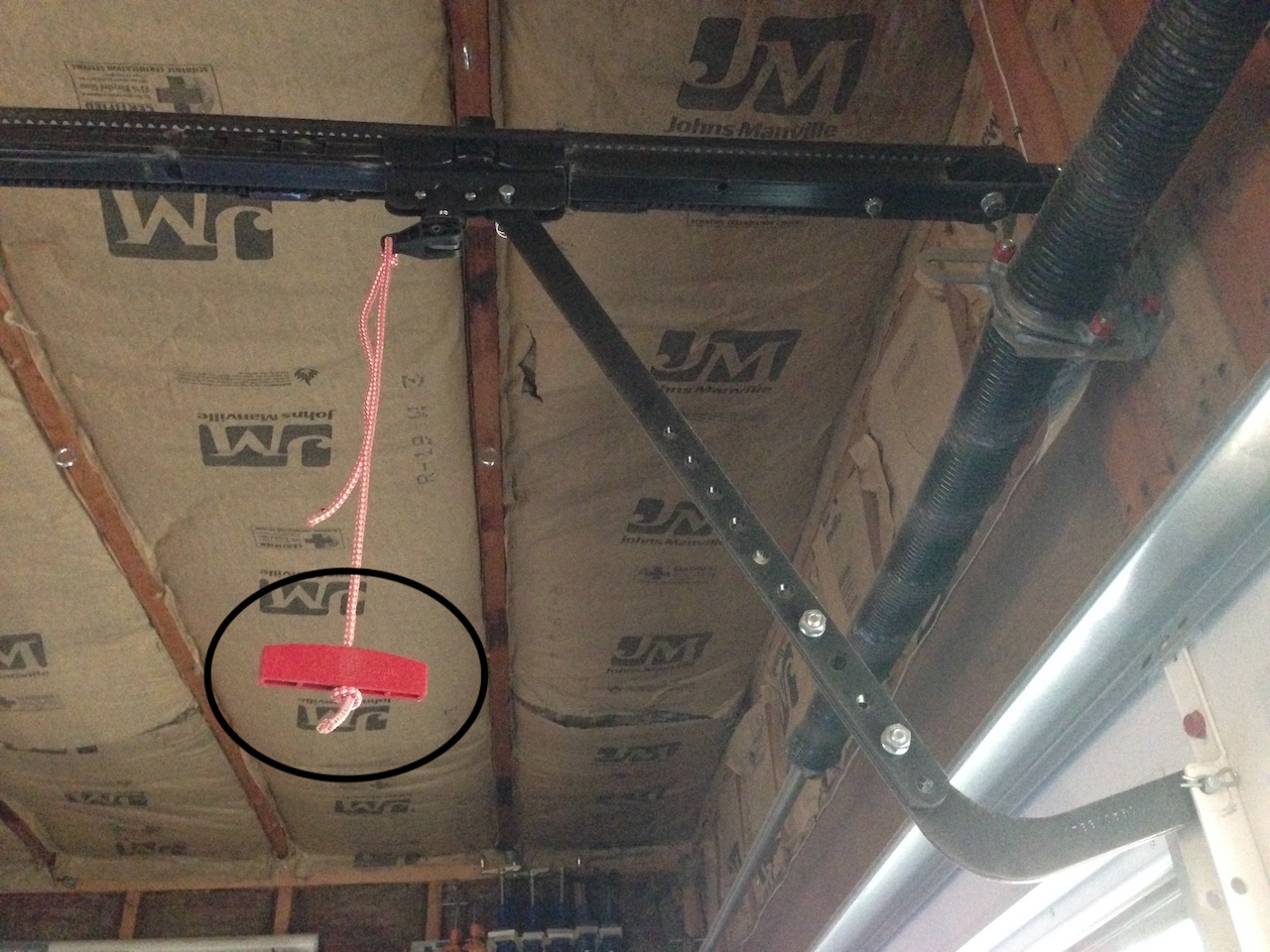
Garage door release cord
- Some door manufacturers recommend white lithium grease as a lubricant. We do not recommend that unless your door manufacturer specifically recommends it, as the oil-based product can collect dust/dirt.
- Check the weather seals around the exterior of the door. Replace the seals if they are dried out, worn, torn, or missing.
- If you have a steel door, inspect the door for rust spots. Rust is an indication of water. If allowed to continue, structural damage could occur causing premature failure of the door.
- Wood doors should be painted when signs of weathering are present.
Door Openers
Every electric opener system is different. If you need help programming your remote, search for the manufacturer’s manual on the Internet and follow those instructions.
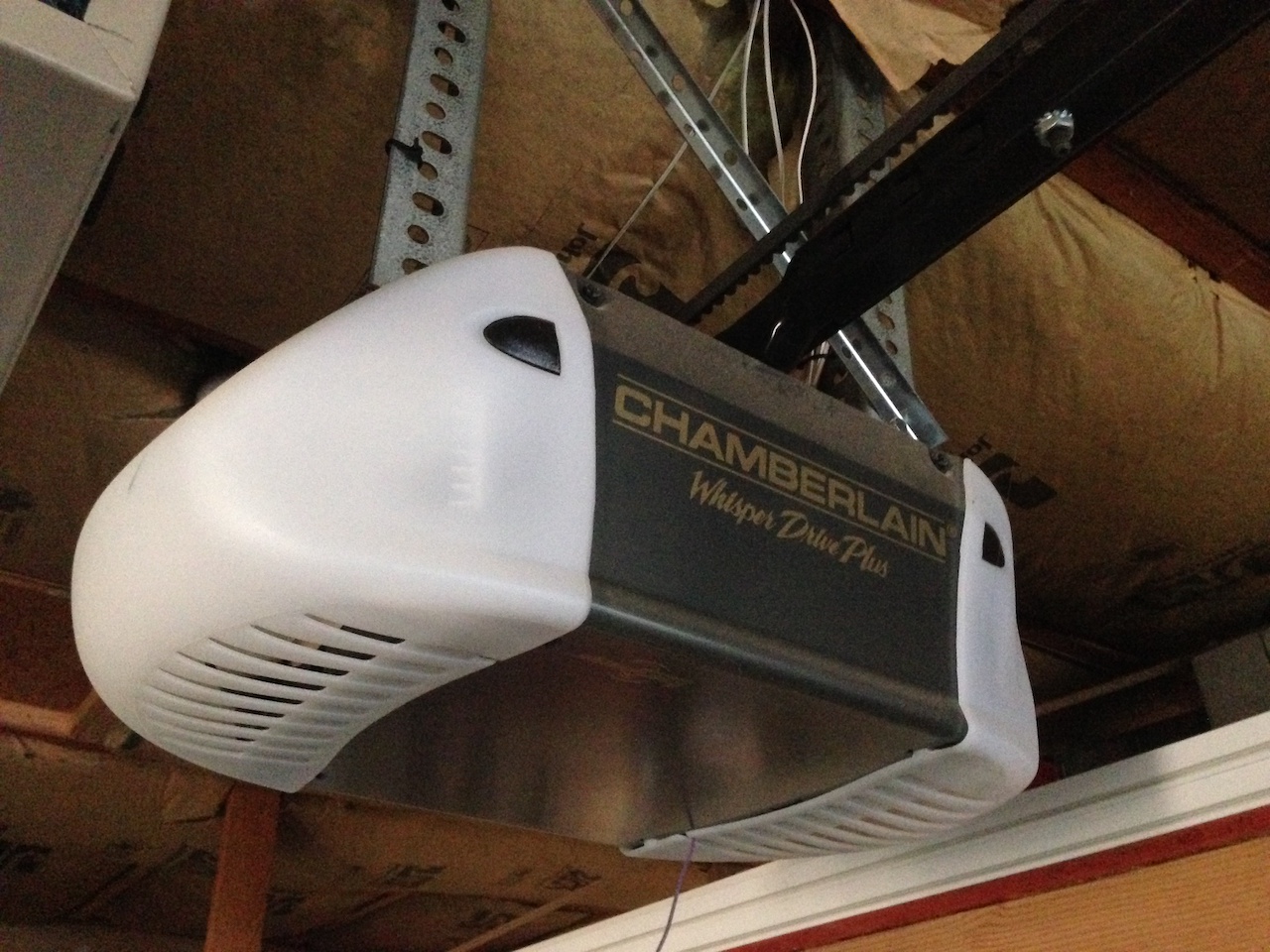
Annual opener maintenance consists of the following:
- Safety Features - Check the downward travel pressure for the force limit. Place a wood block (2 x 4) on the garage floor below the door threshold. Press the button to close the door. If properly adjusted, when the door contacts the block it should automatically reverse and open. If it does not, the force limit requires adjustment. To adjust the force limit, consult your opener owner's manual.
- Once every 3-4 years – Re-lubricate the garage door opener rail. Using a clean soft cloth, wipe away existing lubrication from the center rail and reapply a small layer of lubrication using the lubricant recommended by the opener manufacturer.
- Some openers are advertised as maintenance-free. This usually means the opener motor. Check your manufacturer for your requirements.
- Verify the upward travel limit is properly adjusted. The downward travel limit typically does not need adjusting unless you make other changes to the travel limit of the door.
- Check the photoelectric sensors on the lower sides of the doors. Be sure the eye sensors are properly aligned. Close the door. As it is traveling down, pass an object through the sensor beam. When it senses the object, the door should automatically reverse direction. If it does not, the sensors need to be adjusted or replaced. The photo-eyes should be installed no more than 6” above the floor.
- Openers will have a belt, drive chain, cable, or screw drive, depending on your model. Refer to the manufacturer’s original operating and maintenance instructions. Belts, chains, and cables may need the tension adjusted. The chain or screw drive may require lubrication and will be indicated in your owner’s manual.
- Check the light bulbs in the opener and replace them as needed with the proper wattage. Exceeding the recommended wattage will generate excessive heat and could damage your opener. LED bulbs are recommended to save energy.
- Blow the dust out of your opener. Depending on how you use your garage, the opener will collect a lot of dust. Use a can of air or an air compressor. Getting around the motor area is the most important.
Summary
There are new technology features that connect to your opener that can alert you via your smartphone if you left your garage door open. You can open and close your door from your phone as well as the wall button. Nice options if you are into technology.
As with all products, consult your garage door and opener owner’s manuals for the manufacturer’s recommended maintenance.
Typical Tools Needed for Maintenance
- Adjustable wrench
- Open-end or box end wrench
- Ratchet with sockets
- Slip-joint pliers
- Flat and/or Phillips screwdriver
- Silicon or Teflon lubricant (specific garage door lubricant available at hardware or home centers)
- Dry cloth
- Rags

